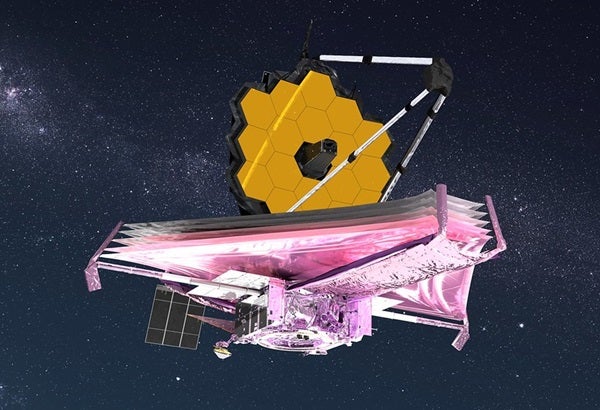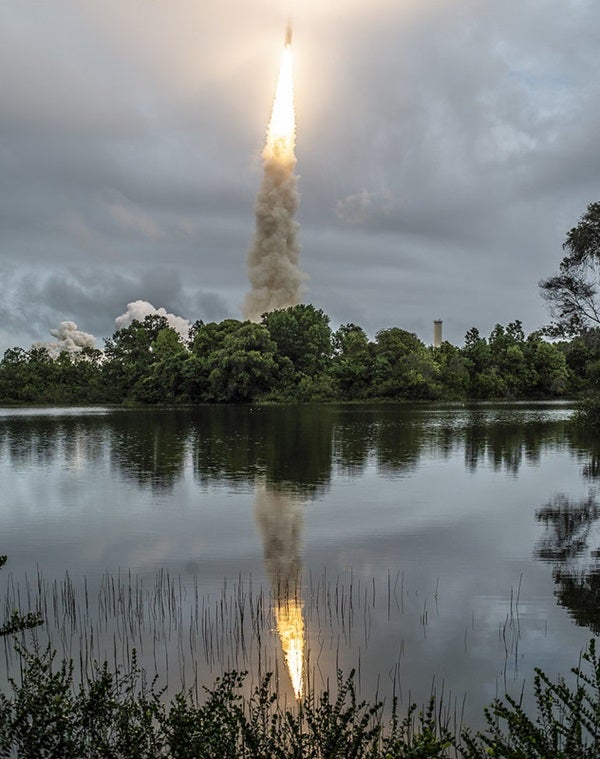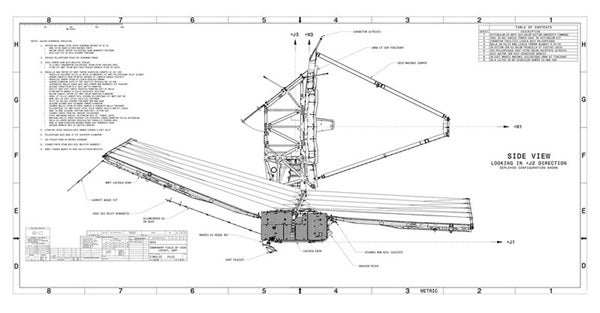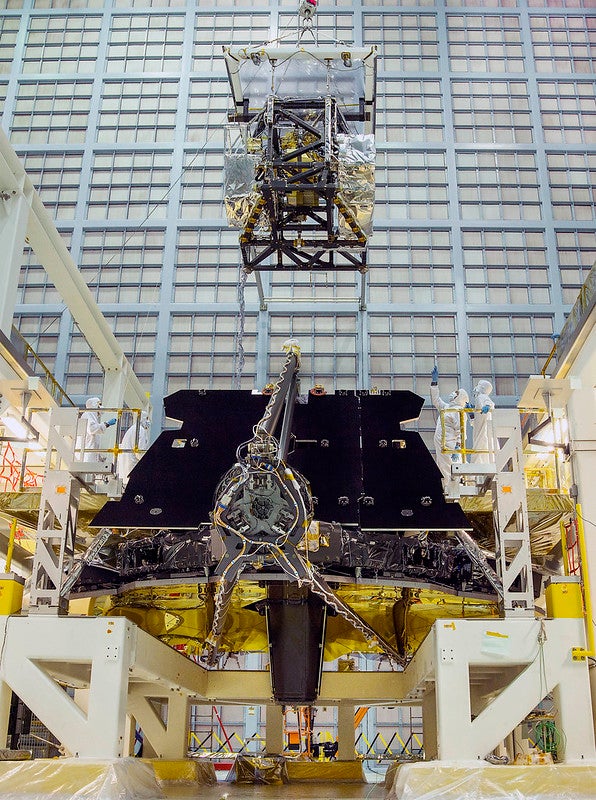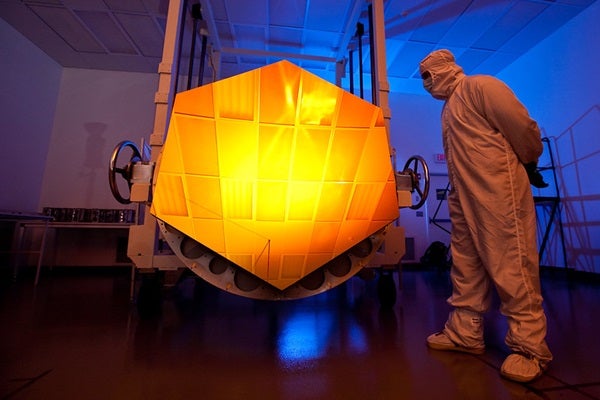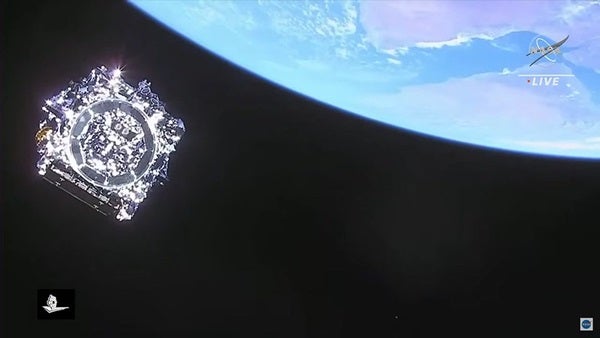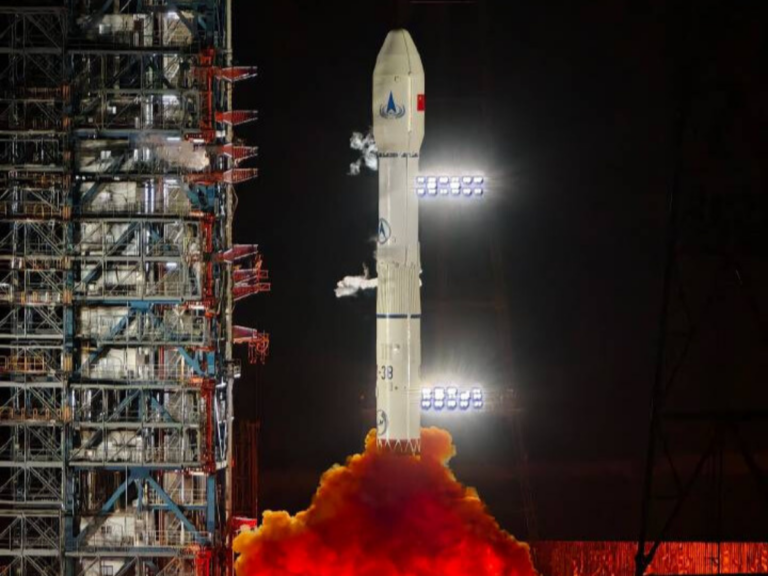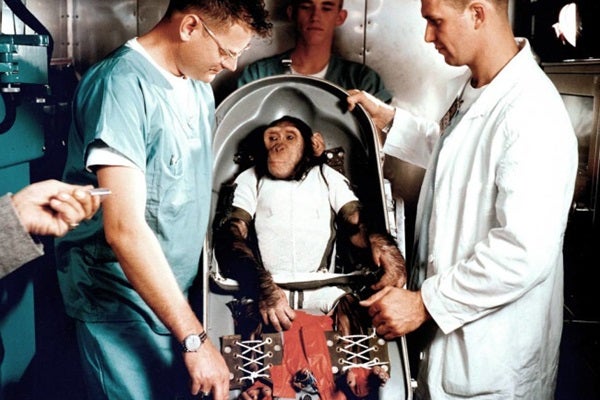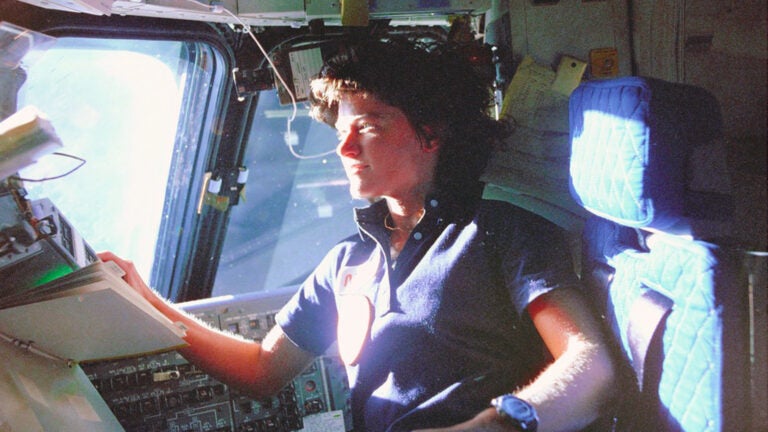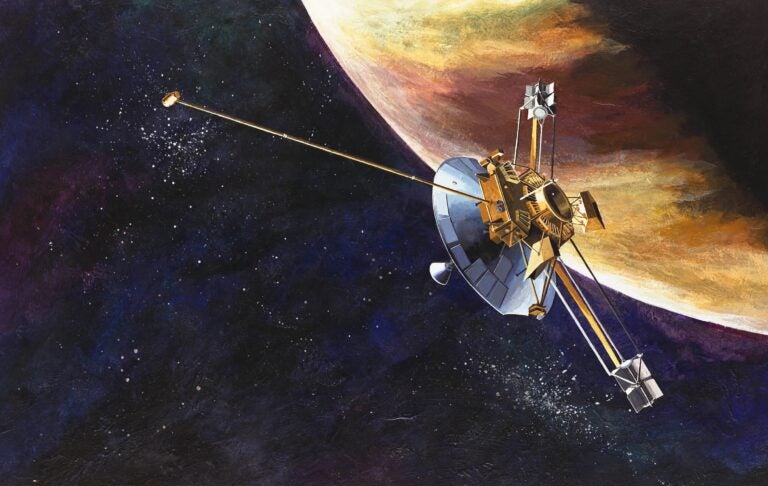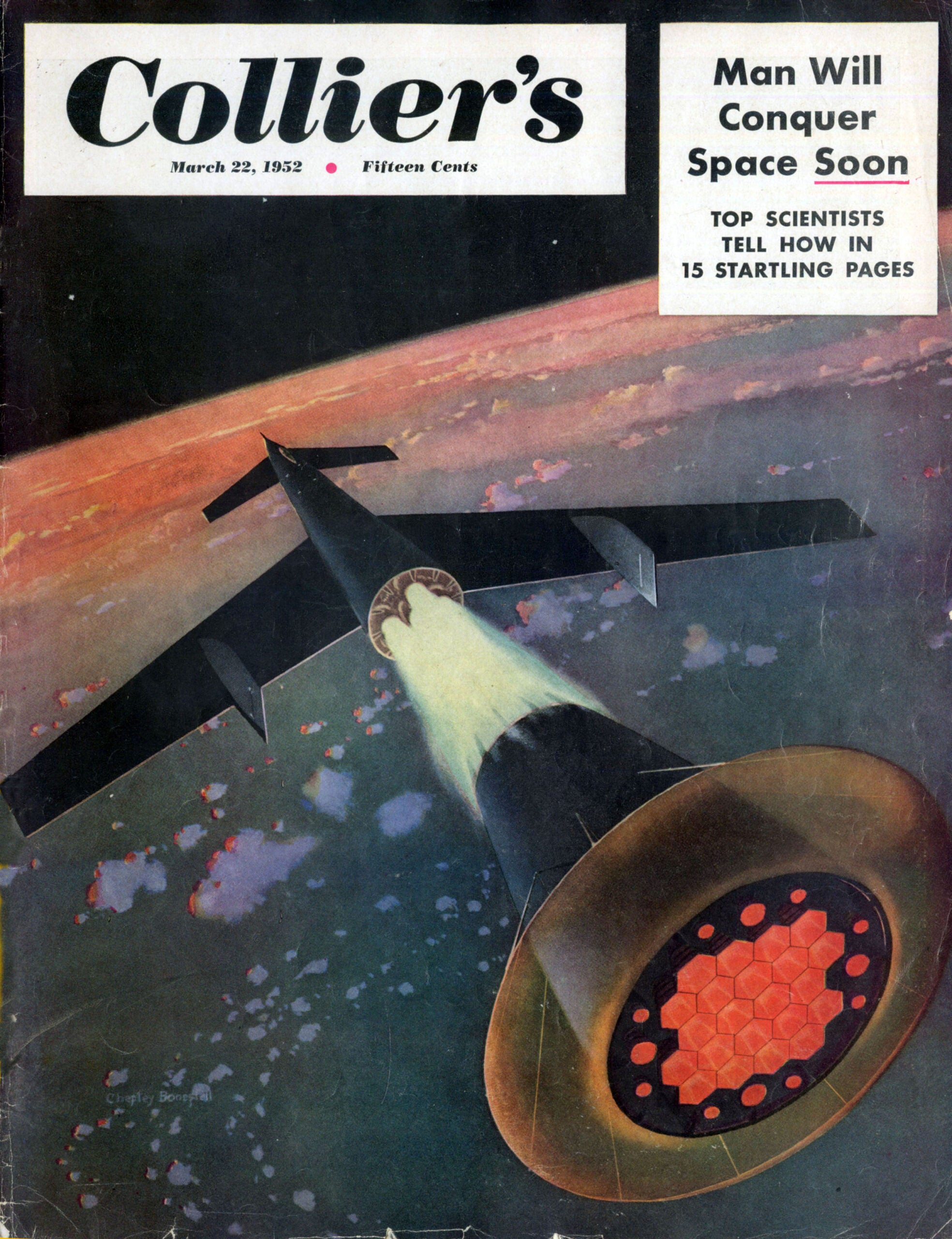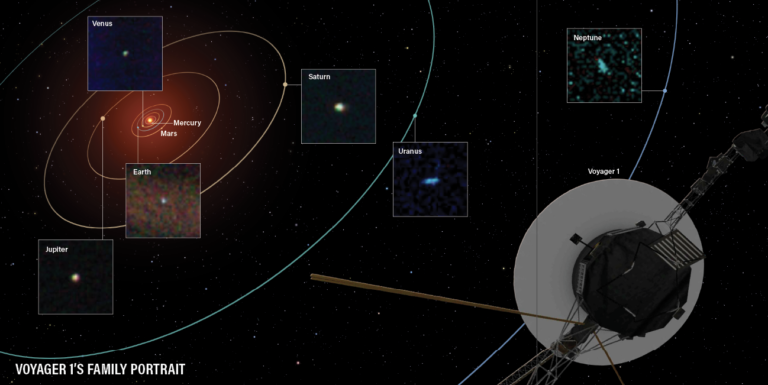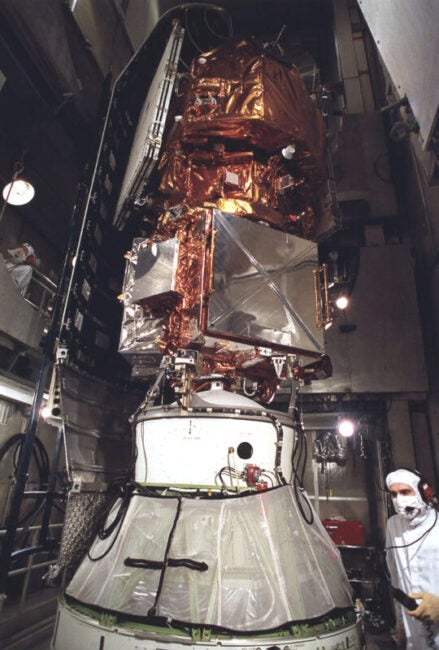When the historic Hubble Space Telescope launched in April 1990, the world waited with bated breath as Hubble soared to the heavens, promising to give the world a window to the cosmos like never before.
Unfortunately, the first pictures Hubble returned to Earth were disappointing — instead of pointlike, stars were surrounded by large fuzzy halos. As it turned out, the telescope’s primary mirror was just a fraction too flat, by less than the width of a human hair. But NASA was determined to fix their flagship instrument. In 1993, astronauts mounted a repair mission, installing new optics and a new instrument onto the telescope.
Today, Hubble’s fuzzy vision is just a blip on an otherwise awe inspiring 30-year history observing the universe.
Yet when it came time for a new flagship telescope, that mistake weighed heavily on scientists’ minds. First discussed before Hubble had even launched, the James Webb Space Telescope (JWST) was originally envisioned to launch in 2007. But delay after delay pushed the telescope’s inauguration back again and again — much to the disappointment of professional and amateur astronomers alike.
Their patience was finally rewarded, however, on the morning of Dec. 25, 2021. JWST took off from Europe’s Spaceport in Kourou, French Guiana. And yesterday, the telescope finally reached its new home in space at the L2 Lagrange point, nearly 1 million miles (1.6 million kilometers) from Earth.
This powerful new tool promises an even deeper window to the cosmos than Hubble — revealing the universe as it existed more than 13 billion years ago. But that’s not all JWST has to offer.
What will JWST do?
JWST will carry out a broad range of scientific investigations over the course of its life, which is currently expected to last at least five years by conservative estimates. But Hubble was only predicted to have a lifetime of 15 years and has so far thrived for twice that long.
The telescope is tasked with a wide range of goals, from finding the first galaxies and luminous objects formed after the Big Bang to observing the evolution of stars and galaxies to searching for new hopefully habitable planetary systems.
Designed before scientists knew much about exoplanets, JWST luckily has the right instruments to determine the atmospheric composition of Earth-like exoplanets. Until now, scientists have been using other telescopes, including Hubble’s infrared instruments, to observe enormous, Jupiter-sized exoplanets. Because of their size, these larger exoplanets are more easily spotted (but researchers have reason to suspect that they aren’t the most common exoplanets in the universe).
JWST will extend out exoplanet observation capabilities, allowing scientists not only to peer at larger Jupiter-sized planets, but also investigate climate and habitability on smaller, Earth-like rocky worlds orbiting small, cool, and often active red dwarf stars.
In addition to expanding exoplanet research, JWST will allow astronomers to observe some of the earliest stars and galaxies, which scientists think formed just a hundred million years or so after the Big Bang. As the universe expands, their light becomes redder as its wavelength stretches out — a phenomenon known as cosmological redshift.
Because of this, the light emitted from the most distant objects, billions of light-years away, stretches into the infrared portion of the spectrum. This primordial light will enter JWST’s state-of-the-art mirror — designed to pick up these longer wavelengths — and get sent to the infrared instruments aboard the telescope for analysis. Studying these early galaxies will provide clues to what our universe was like in its infancy.
From there, JWST can examine the evolution of galaxies. Why do we have the variety of galactic structures we see today? What is the nature of galaxies and the supermassive black holes that sit at their hearts? By looking at galaxies throughout the history of the universe, from early days to the present, astronomers will be able to start answering these questions.
All aboard
NASA and its global partners the European Space Agency and the Canadian Space Agency teamed up to make JWST a technological marvel. This $10 billion telescope is equipped with a suite of science instruments cryogenically chilled to about –390 degrees Fahrenheit (–234 degrees Celsius). Let’s take a brief look at these “cool” JWST instruments:
Near-Infrared Spectrograph
A spectrograph disperses or separates of light into different wavelengths. This is called a spectrum. JWST will analyze an object’s spectrum, such as an exoplanet, to determine its mass, temperature, and chemical properties.
Near-Infrared Camera
You’re not seeing double: JWST’s has two identical near-infrared cameras. These cameras will focus on detecting light from nearby galaxies, early star and galaxy formation, and even closer-to-home Kuiper Belt objects.
Mid-Infrared Camera and Spectrograph
In addition to spectroscopy, JWST’s sensitive detectors will observe the light from distant galaxies and stars to determine their distance. It will also take beautiful astrophotography!
Fine Guidance System
No one wants to get lost in space! Observing from 1 million miles away at a stable point called L 2, JWST’s Fine Guidance System will precisely determine its location and where to point its mirror and cameras.
Near-Infrared Imager and Slitless Spectrograph
Another apparent double, this spectrograph will work to detect the universe’s “first light,” emitted from those first primordial stars that existed a few hundred million years after the Big Bang. The cutting-edge technology from JWST’s Slitless Spectrograph will also detect exoplanets and their atmospheric properties, such as water or carbon dioxide.
JWST’s mirror
NASA and its partners collaborated for decades to engineer the sharpest tools for JWST. However, these innovative instruments are only part of what make it such a feat of engineering.
JWST’s remarkable primary mirror is its own eye-catching piece of hardware. The mirror is composed of 18 hexagonal segments called hexapods, each motorized by its own actuator that can adjust that segment’s orientation.
To maximize accuracy, the hexapods have six degrees of freedom. The 18 segments act as one mirror with a total diameter of 21.3 feet. (6.6 meters). The beryllium metal mirror, finished with a 1,000-atom-thick coat of gold, is optimized to work under extremely cold temperatures: –364 F (–220 C).
JWST’s primary mirror is so powerful it can spot a penny at a distance of about 24 miles (38.6 km). It’s also extremely smooth, says Amber Straughn, NASA Deputy Project Scientist for Webb Communications. “If the mirror could stretch across the continental United States, the bumps would only be a few inches tall” she says
A complementary pair
Despite what you may have heard, JWST is not considered a replacement for Hubble. Instead, the two telescopes were designed for different purposes, filling in one another’s blind spots.
“Webb will complement Hubble to provide a full spectrum of understanding about stars and exoplanets,” says Kevin Stevenson, an astrophysicist at John Hopkins Laboratory.
One example of this complementary partnership is a technique called transmission spectroscopy. As a planet transits, or moves across, its host star, some of that starlight travels through and is absorbed by the planet’s atmosphere, while the rest travels unhindered through space. When JWST observes the transit, scientists can determine which wavelengths of light were absorbed by the planet’s atmosphere because they will be missing from the final spectrum the telescope collects.
While this technique is not new, JWST’s infrared capabilities will allow researchers to perform transmission spectroscopy at infrared wavelengths, while Hubble’s forte is observing these changes at ultraviolet (UV) wavelengths. Scientists can ultimately combine JWST observations with Hubble’s to draw conclusion about an exoplanet’s atmosphere — and its potential habitability.
By using JWST and HST in tandem with each other, astronomers will soon observe the universe like never before — ushering in a new age of groundbreaking astronomy.
Public involvement: Communities across the country — and the world — are invited to join NASA and its partners to watch many of JWST’s first steps. Images from Webb, managed by the Science Space Telescope Institute, are expected six months after launch. NASA networks such as NASA/JPL Solar System Ambassador Program and the Night Sky Network host local events, so keep an eye out!.

